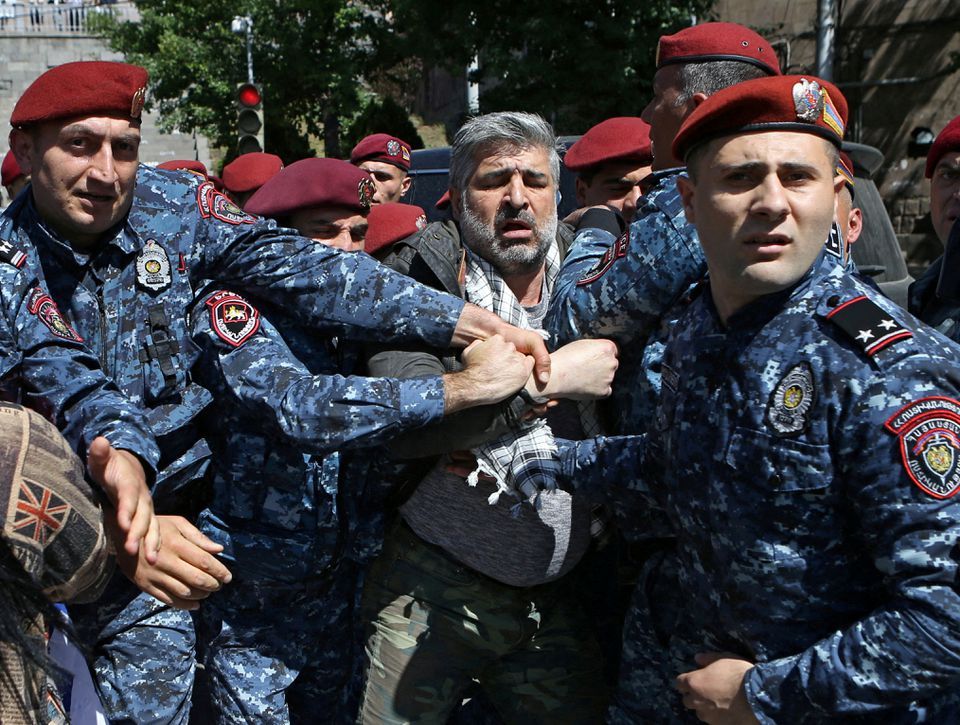Analysis: Armenian revenge-seeking forces doomed to failure

By Vugar Khalilov
Azerbaijan’s convincing victory over Armenia in the 44-day second Karabakh war in 2020 has ushered a new phase in the relations between the two arch-enemies, paving the way for the start of the negotiations for the resolution of the Karabakh conflict.
The active military phase of the Karabakh conflict started in late 1988 with outright territorial claims and ensuing military aggression and occupation of Azerbaijani lands by Armenia. However, nearly 30-year-long talks between Yerevan and Baku under the aegis of the OSCE Minsk Group to have the occupied lands liberated peacefully yielded no results and led to the second Karabakh war in September 2020 and consequently the liberation of the Azerbaijani territories.
In the early stages of his term in office, the incumbent Armenian Prime Minister Nikol Pashinyan, who came to power on the waves of popular protests of 2018, exacerbated the overall picture with his harsh anti-Azerbaijani rhetoric, justifying Armenia’s occupation of Karabakh and adjacent territories to bolster his popular support.
The Armenian leader’s inflammatory trips to Karabakh, particularly to the historical Azerbaijani city of Shusha, as well as his declaration that Karabakh - Azerbaijan's internationally recognized territory - is part of Armenia, stymied peace talks and forced Azerbaijan into the 44-day war.
However, Pashinyan's failure in the war led him to soften his stance and engage in talks in order to improve ties with Azerbaijan and resolve post-conflict concerns. The war came to an end with the signing of the November 10, 2020, trilateral declaration, signed by Azerbaijani, Armenian, and Russian leaders.
By the way, the Armenian opposition marched in the streets in Yerevan late that night to protest the signing of the first ceasefire deal with Azerbaijan through the mediation of Russian President Vladimir Putin. The Armenian opposition demanded Pashinyan's resignation in protest at the "humiliating" truce. The number of demonstrators, however, was not large enough to persuade Pashinyan to quit. Following the snap parliamentary elections, the incumbent prime minister has solidified his position in the National Assembly, winning the majority.
Further, important phases of peace talks between Azerbaijan and Armenia took place in Brussels under the auspices of European Council President Charles Michel, in line with Baku's five key principles, which emphasize the states' territorial integrity, in other words, urges Armenia to give up its territorial claim against Azerbaijan.
Following his second meeting with Azerbaijan's president in Brussels, Armenian Prime Minister Nikol Pashinyan told the Armenian parliament that the international community wants Armenia to "lower the bar" on its claims to the Karabakh territory. After Pashinyan's address in parliament, in which he advocated for striking a peace accord with Azerbaijan, a wave of demonstrations erupted in Armenia.
The current opposition protests are organized by Armenian revanchist forces, led by former Armenian presidents Robert Kocharyan and Serzh Sargsyan, who are accused of war crimes against innocent Azerbaijani people during the first Karabakh war (1988-1994). The two war criminals were the major instigators of Azerbaijan's Karabakh separatist movement, which brought instability and carnage into the region for over 30 years.
The fundamental purpose of revenge-seeking political forces, like Hayastan (Armenia) bloc, the Republican Party, and the Dashnaktsutyun and Motherland is to sabotage peace talks with Azerbaijan, boost their popularity, and regain power in Armenia.
"Pashinyan is a traitor," said Ishkhan Saghatelyan, a parliament vice-speaker and one of the opposition leaders, adding that the ongoing public protests will compel the prime minister to resign.
The Armenian Hraparak daily reports that the opposition will proclaim the end of the current stage of civil disobedience acts in order to rebrand the political groups, engaged in the campaign. There is a need to introduce new things and new faces, as well as generate fresh scenarios. As a result, a break is required to achieve this goal, according to the daily.
The revanchists appear to have been unable to acquire enough public support to realize their objectives, and thus are looking for new instruments to preserve their popularity. In general, whenever there was a glimmer of hope for peace with Azerbaijan, Armenian revanchist parties attempt to disrupt it.
The Armenian parliament shooting in 1999, which killed two de facto decision-makers in the country's political leadership - Prime Minister Vazgen Sargsyan and Parliament Speaker Karen Demirchyan, both of whom were willing to compromise in the Karabakh conflict - is a vivid example of Armenian revanchist groups' anti-peace stance.
In the 1999 parliamentary election, the victims' reform-minded alliance secured a majority, thus removing President Robert Kocharyan from the political arena. The shooting resulted in substantial changes in the political landscape of the country, ultimately derailing the negotiations started with Azerbaijan for a peaceful settlement of the Karabakh conflict.
Unlike earlier acts of sabotage by revanchist organizations, the present demonstrations in Armenia appear to be unable to mobilize a sufficient number of people to put pressure on the government to halt the peace negotiations with Azerbaijan.
Azerbaijani President Ilham Aliyev, on the other hand, has emphasized several times that his country is prepared for the worst-case scenarios and that Armenia should avoid revanchist rhetoric and remain dedicated to peace discussions.
"Revanchist forces that occasionally emerge in Armenia should know that this is the only way out for Armenia and perhaps the last chance," Aliyev said at the 5th Congress of World Azerbaijanis in Shusha on April 22, 2022.
---
Follow us on Twitter @AzerNewsAz
Here we are to serve you with news right now. It does not cost much, but worth your attention.
Choose to support open, independent, quality journalism and subscribe on a monthly basis.
By subscribing to our online newspaper, you can have full digital access to all news, analysis, and much more.
You can also follow AzerNEWS on Twitter @AzerNewsAz or Facebook @AzerNewsNewspaper
Thank you!
